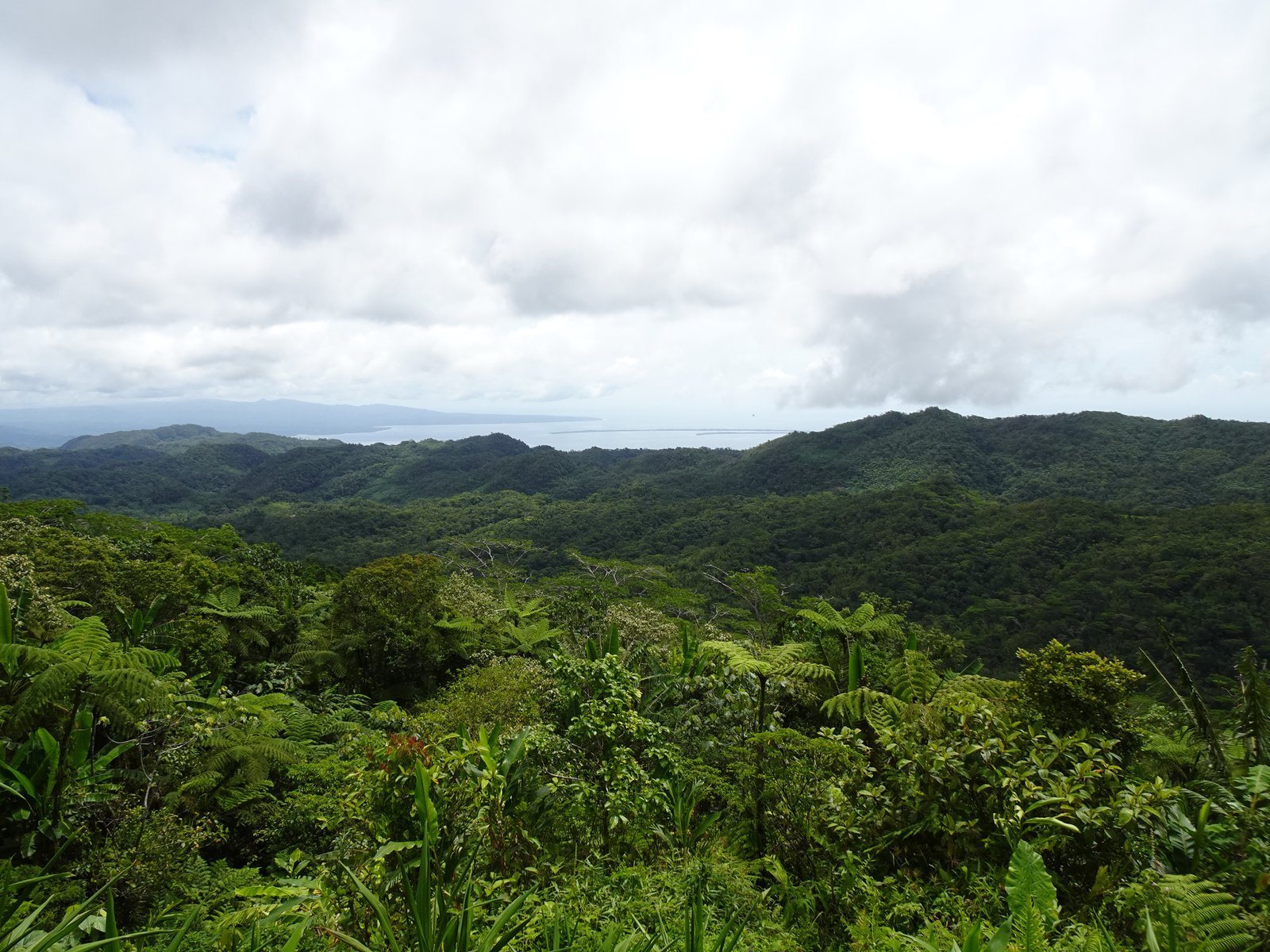Women-led frog conservation in mountainous Malaita, Solomon Islands
From the Solomon Islands Eyelash Frog to green-blooded skinks, the upcoming herpetology expedition to Malaita is certain to reveal a plethora of strange and marvellous creatures.
Curator of Amphibian and Reptile Conservation Biology Dr Jodi Rowley, and research assistant Tim Cutajar, will venture to Malaita on the 18th July to delve into the delights of highland herpetology. Jodi’s passion, the frog, is fortuitously recognised by the local Kwaio community as a ‘woman’s animal’, and she plans to facilitate women’s lead research and conservation in this isolated region.
Meanwhile Tim Cutajar is excited to be exposed to an entirely new set of frog fauna whilst experiencing the culture of the Kwaio people. The scientists will be shadowed by Tom Bannigan, a cinematographer, keen to record the journey and collaboration with the local community.

View from the forest to the sea, Malaita, Solomon Islands.
Image: Jim Phillipson© Jim Phillipson
Jodi is no stranger to fieldwork in remote tropical areas. Growing up in Sydney she completed her PhD at James Cook University in northern Queensland, before moving to South East Asia to pursue her passion for frog conservation. Before her arrival at the AM her role with Conservation International lead her to investigate frog populations in the jungles of Cambodia, Vietnam and Southern China. One aspect of the upcoming expedition she is unfamiliar with, and excited to experience, is working closely with the culturally unique Kwaio community.

Dr Jodi Rowley, Curator, Amphibian & Reptile Conservation Biology (Herpetology) with a Green Tree Frog (Litoria caerulea).
Image: Stuart Humphreys© Australian Museum
Much of the Kwaio community continue to practice pre-European custom and religion, often wearing traditional attire known as kapolato. In fact, following the eight-hour hike through dense, muddy and wet forest, Jodi and Tim will also don kapolato for the obligatory Kwaio welcome ceremony.

During an April 2019 expedition Paul Flemons, Andrew Mitchell and Frank Köhler don traditional wear (kapolato) for a welcome ceremony in Malaita, Solomon Islands.
Image: Jim Phillipson© Jim Phillipson
Jodi is keen to learn from the local community and co-lead this expedition from a women’s perspective. The aim of the expedition is not purely to conduct a herpetology survey, but, as Jodi explains "to be as useful as we can to the local community, to do what we can to support their local conservation efforts".
The team will conduct frog and reptile surveys after nightfall, using the daylight hours for cataloguing, photographing and DNA collecting. They also hope to record the calls of frogs and will be bringing frog and reptile guides to share with the local community.

© Jim Phillipson
Several morphological features can be used to distinguish frog species, including skin colour, skin pattern, ear drum, eye features, body size and feet webbing. Upon their return to the AM the team will be busy identifying frogs and reptiles found during the expedition via their appearance, DNA and (for frogs), their calls. A mere eight frog species are known from Malaita and the team hope this survey may result in the description of novel species.
The team also hopes to survey for the amphibian chytrid fungus, a disease that has plagued frog populations across the world. Jodi is keen to find out if this disease has spread to the remote mountains of Malaita. During the survey they hope to be able to swab the bellies of captured frogs to test for this fungus back at the AM.

Traditional dwelling in Malaita, Solomon Islands.
Image: Jim Phillipson© Jim Phillipson
One of the most visually fascinating frogs known from the region is the Solomon’s eyelash frog, with its triangular shaped large head and set of pointy protrusions above its eyes. Another unusual and interesting creature likely to make an appearance are skinks from the genus Prasinohaema. These skinks have blood that is rich in the pigment biliverdin, resulting in their muscles, bones and tissues being coloured bright green.

Ceratobatrachus guentheri, the Solomon Islands Eyelash Frog, from the AMs collections.
Image: Emma Flannery© Australian Museum
Due back at the AM in early August 2019, Jodi and Tim will share their experiences and findings from this expedition. They are bound to not only return with important herpetological samples and specimens, but also with unique experiences from working closely with the local Kwaio community. Watch this space!
Emma Flannery
Communications Administrator- Solomon Islands Conservation Alliance

